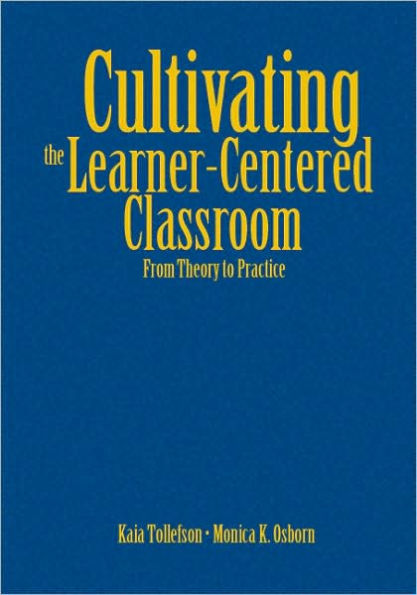"What could be more important to teaching and learning than a focus on the student, keeping their needs and their development as learners at the center of all we do? The authors have done a masterful job of pulling together the theoretical foundations and best practices from a wealth of sources to articulate a clear and easily understood framework for practitioners. The book is a testament to the difference that hope, commitment, and compassion will make in the classroom, in each of us as professionals, and in the lives of learners. "
"Tollefson and Osborn demystify the concept of a 'learner-centered classroom' with their rich, practical examples and time-tested strategies. A true resource for new teachers or those seeking clarity, this guide tackles the many aspects of progressive education in a realistic and straightforward manner. "
"Tollefson and Osborn have written a truly useful book for preservice and beginning teachers. The authors' attention to the daily experiences of teachers, illuminated by stories from the classroom and embedded in a theoretical rationale and discussion, will be appreciated by professional educators and their students. "
"A very practical approach to actively involving students, teachers, and parents in the learning process. The suggested strategies give students knowledge and a voice in their learning. "
"A superb book that does exactly what it promises: takes the reader from theory to practice. Rich with clear prose, strong research, and thoughtful reflection, this useful tool is for teachers who want to engage students more deeply with each other, the content, and the world—all for the sake of real learning. In our time, when classrooms have become dangerously test-centered, we need books like this if we want to serve children truly and well. So read this book, put it to good use, and join the ranks of teachers who understand that any education that is not learner-centered is no education at all. "
"Acknowledges and nourishes the teacher's ability to help children take control of their lives. This book is both inspirational and practical, helping teachers take charge in their classrooms and guide their students in becoming independent and responsible. "
“Packs in tips on how to facilitate learning communities within and outside the classroom. The keys here will provide teachers with a lifetime of options.”
"As someone who is continuously striving to create a learner-centered classroom and share my enthusiasm with other teachers, I am really excited to find a book that so accessibly provides both the reasons and practical strategies for developing a community of learners within the confines of most district requirements. I enjoy sharing its wisdom with new teachers as well as with my more seasoned colleagues. "
"The learner-centered approach, which is the basis of this excellent book, provides a powerful and vivid vision that impacts students learning in a very positive manner. This book allows you to ponder and remember the great responsibility and wonderful opportunity of motivating each and every student. I strongly recommend this book for K-12 educators, as well as those who are interested and involved in making a positive difference in education. "
"This book is an invitation for educators at all levels of instruction to reevaluate what teaching and learning truly mean. In the midst of instructional collaboration with colleagues, both entry-level teachers and veterans will be impacted by the encouragement Tollefson and Osborn offerfor building and improving our educational systems. "
"Provides a readable, practical how-to manual for educators who truly want to put the needs and hopes of students at the center of their craft. By providing specific examples of strategies for community building, classroom management, lesson design, and working with parents, this book bridges the chasm between theory and the day-to-day realities of teachers and administrators. "



